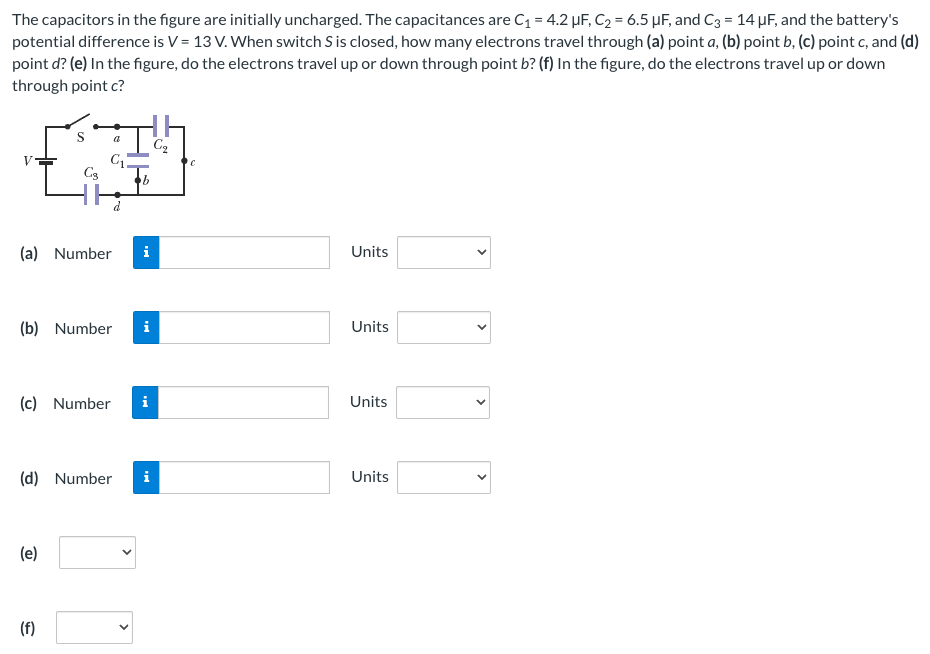The capacitors in the figure are initially uncharged. The capacitances are C1 = 4.2 μF, C2 = 6.5 μF, and C3 = 14 μF, and the battery's potential difference is V = 13 V. When switch S is closed, how many electrons travel through (a) point a, (b) point b, (c) point c, and (d) point d ? (e) In the figure, do the electrons travel up or down through point b? (f) In the figure, do the electrons travel up or down through point c? (a) Number Units (b) Number Units (c) Number Units (d) Number Units (e) (f)
